17. The Crazy 88 Showdown in Kill Bill Volume 1
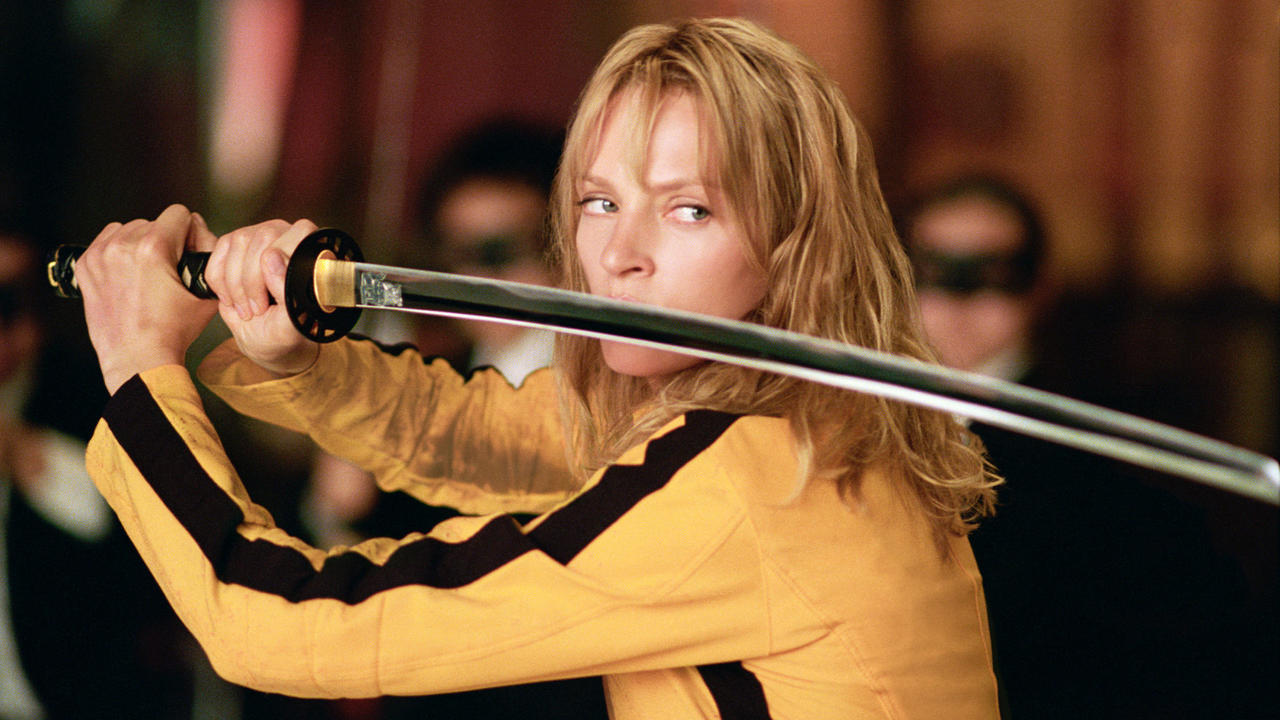
By the time Quentin Tarantino reached the point of his career from which he felt as if he could finally bring his homage to 1970s Kung-Fu movies to the big screen, he had already directed a fair amount of tremendous scenes. However within Kill Bill Volume 1, he really outdoes himself and brings forth a fight scene the likes of which we had never seen before, not just for its scale and coordination but for its stylistics and direction.
Uma Thurman stars as the Bride, a former assassin who after having what you may call a less than perfect wedding reception sets out to track down her former colleagues in arms for a frank and thorough discussion about the inconvenience, they have caused her. Having made it as far as Japan, she finds herself facing a group deadly assassins called the Crazy 88 (even though there are in fact more than 88, I guess it’s just a catchy name?).
The fight is so much fun on so many levels. The pairing of Tarantino’s unique stylistics with some frankly awesome stunt coordination. That choreography was on behalf of Yuen Wo Ping who was able to make the scene both thrilling and ridiculously entertaining.
While the notion of the Bride taking on so many bad guys at once may easily fall into the category of self-parody in which your suspension of disbelief is drained completely to the point where you are no longer invested in the action, this scene took those campy touches and still somehow retained a sense of real adrenaline and danger.
16. Story of the Apartment in City of God
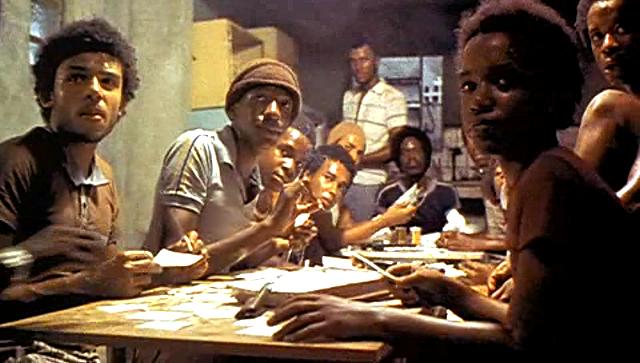
So if you want to inject a sense of added detail and depth into the world your film is creating as well as explaining the past of a certain character, there’s no way to do it beyond simple expeditionary dialogue, right? City of God sought to use an alternative method to achieve this. It depicts the growth of organized crime in the Cidade de Deus suburb of Rio de Janeiro and nearly two decades through the eyes of a poverty stricken teenager.
At one point, a few teenagers try to purchase drugs from a local dealer and where any other filmmaker might sweep this moment under the rug and not give any consideration to the history of the environment their characters occupy, the film deviates momentarily to flesh out a relatively secondary aspect of the film and bring added depth and levity to the world that these characters live through every day.
Then there’s the execution of it. Instead of clunky expositional dialogue, we see a quick montage that chronicles the history of the apartment and the drug trade that is run from it. With each short sequence shot from the same position and without any sudden cuts to, there is a great sense of fluidity to the story.
Each segment is gradually superimposed onto the other to create a vast canvas and a rich history. It’s an ingenious, immersive and inventive way to convey information to the audience and works perfectly.
15. Hallway Fight in Oldboy
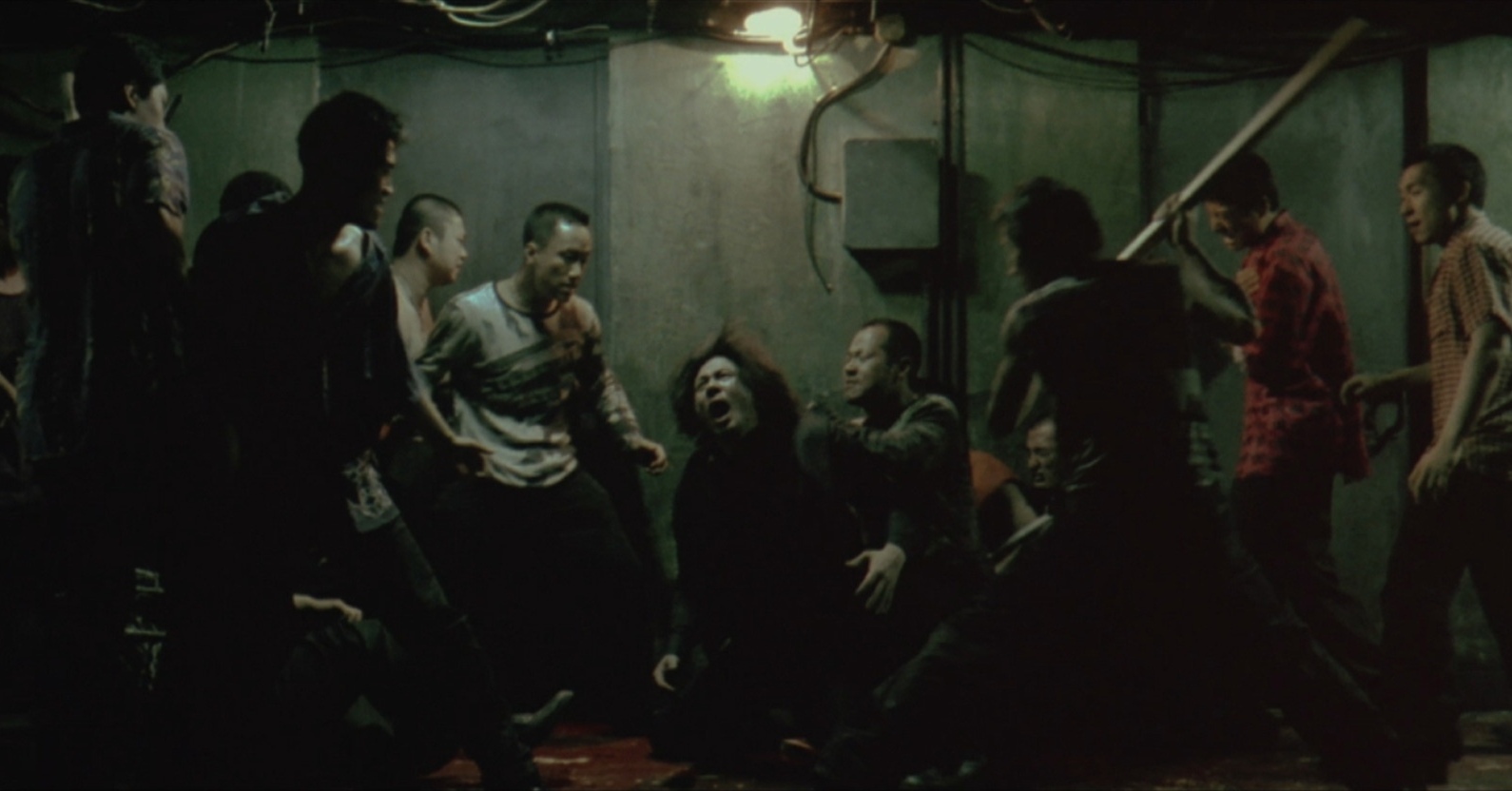
There are many things to admire in Oldboy, but I’d say it would be safe to assume that above all else, the first thing people will recall when asked about the movie is the legendary hallway fight. Having been released after a 15 year imprisonment, Oh Dea-Su sets out on a quest of vengeance against his captors. The film’s best scene presents us with a simple scenario, Dae-Su at one end of a hallway, answers at the other, dozens of bad guys in between and a single hammer.
The fight scene is jaw dropping, filmed in a gliding and unbroken long take that lasts more than three minutes. Dae-Su doesn’t just cut through his enemies easily. He struggles, gets knocked down, plays dead for a second and even sustains a knife wound to the back all of which only adds to the realism of the scene and helps emphasise the immediate danger our protagonist is in. As the fight progresses, we feel his own energy draining and root for him to dispose of the bad guys to continue his journey.
Then there’s the sheer brutality of it, the crunch and bluntness of every hit all brings an astonishing level of brevity to the scene. With all of this going on, you would be weary that the fight may dissolve into chaos, but thanks to some skillful camera work and, more importantly, superb choreography the fight melds into pure perfection that’s just a pure joy to watch. It’s a work of brutal art, brimming with energy and impact. As shocking as it is beautiful to behold.
14. News of Steiner’s Failure in Downfall
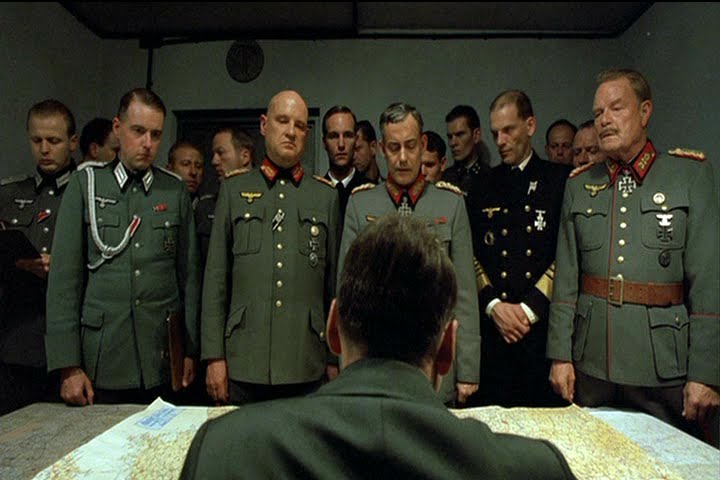
If you have spent any time at all over the past decade on this little thing called the internet, you may have already seen this sequence in question. A quick search on YouTube and you can find Hitler ranting about everything from the poor reviews received by Batman v Superman to Blackpool Football Club’s relegation from the Premier League. As hilarious as the parodies are, there is no doubt that the original sequence itself is a display of pure acting talent.
Downfall chronicles the last days of the war from within Adolf Hitler’s bunker, glimpsing the lives of those who served him throughout the war effort and the attempts of the citizens of Berlin to stave off their inevitable defeat. At this point, Hitler receives news of the war effort, it is not good.
This is the moment when Hitler finally accepts his defeat, and does so in a speech of pure rage. He vents his anger at the generals, the people of Germany and his armed forces, shouting accusations of treachery and cowardice.
Bruno Ganz’s performance is utterly magnetic. The sheer aggression and frailty with which he portrays the dictator is almost startling, injecting a sense of humanity into the role but never letting us forget the evil that lies within it.
The way that the scene within the war room is intercut with the horrified reactions of those listening outside, as they are given confirmation that their own leader has given up hope and their defeat is truly inevitable, is also deeply impressive and brings forward the direct impact of the entire war both on its biggest players and the civilians around them.
13. Needle in the Hay in The Royal Tenebaums
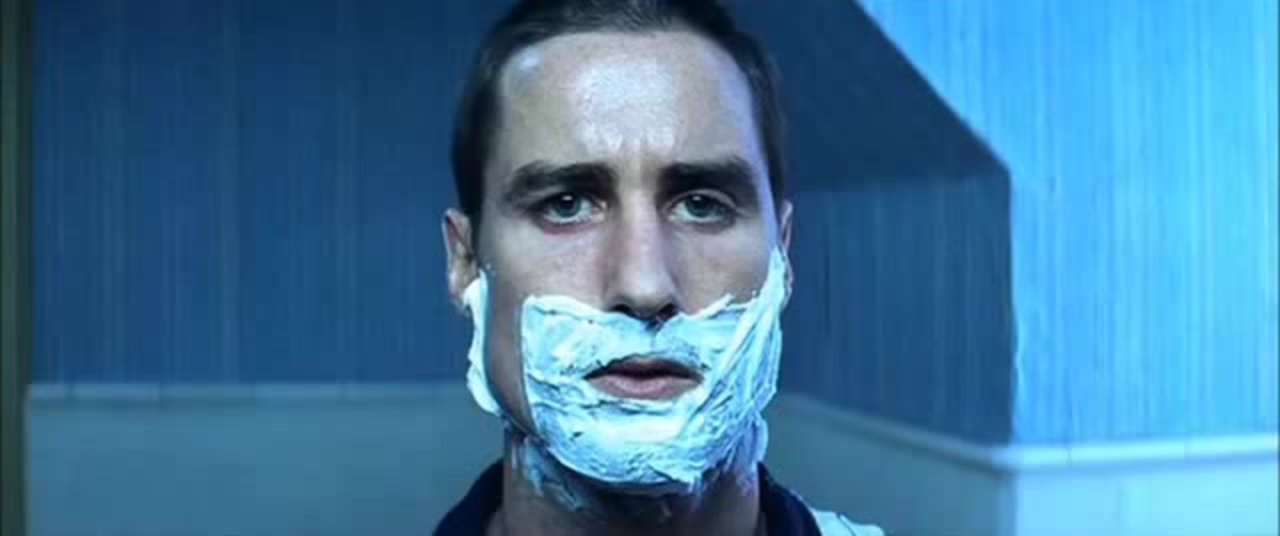
Some scenes are so quietly restrained and beautifully shot that they leave a haunting impression on a view. Some scenes are also so emotionally traumatising and physically draining that they can have the exact same effect. When you have a scene that does both, you have the Needle in the Hay scene from The Royal Tenebaums.
The movie follows the lives of three gifted siblings who experience great success in youth, and even greater disappointment and failure after their eccentric father (Gene Hackman) leaves them in their adolescent years. Having secretly confided to others that he is in love with his adopted and promiscuous sister, Richie and Margot’s husband (Bill Murray) hire a private detective to uncover her past.
When Richie receives the news, he takes it badly. He goes into the bathroom, shaves off his hair and beard, and calmly slashes his wrists. The way the scene is edited is masterful, as is Wes Anderson’s use of framing and geometry that seems to speak with such riveting emotion. As well as that you have Wilson’s stone cold expression that is just completely captivating on its own.
The final addition is that when Richie takes off his sunglasses and shaves his excess hair, it’s the first time in the film we are getting a full and unobscured view of his face, just as his soul bears itself at the same time.
12. Cruellest Cut in Cache

Michael Haneke’s psychological thriller is the kind of movie that just sucks the air out of the room with every scene, but nothing else does that like the cruellest cut. The quiet life of a Paris family is disturbed when they receive a series of surveillance tapes of the exterior of their residence from an anonymous source.
It’s an unnerving examination of new technology being used to its full extent, but old wounds remaining open to their greatest extent. It’s hard to talk about this scene without spoiling the entire film so we’ll try to be vague. Also it’s hard to talk about this scene without going through a minor heart attack, so bear in mind we are also taking our own health into account as well as your viewing pleasure.
Haneke’s masterful direction is on top form here, with even the tiniest detail adding a level of depth and texture to the scene that make it all the more disturbing when the rug is so completely and utterly pulled out from underneath you. What is even more remarkable is how so many films use sound as an effective way to scare us, but Haneke used silence to an even greater effect, shocking us unlike few things have from the last decade.
11. Tiny Dancer in Almost Famous
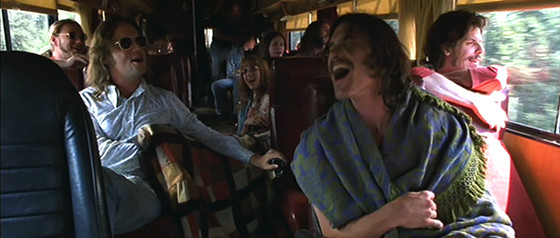
Say what you will about Cameron Crowe’s more recent directorial outings, but boy does the man know how to match the music with the scene. There’s no dialogue for this moment in Almost Famous, no clunky expositional dialogue along the lines of “hey let’s put this argument behind us and move on”, it’s simply a group of people gradually singing together and yet it works so perfectly and conveys such a strong message about the romance of rock and roll in the 1970s.
Almost Famous tells the fictional story of a teenage journalist writing for Rolling Stone magazine in the early 1970s while covering the fictitious rock band Stillwater, and his efforts to get his first cover story published. The film is semi-autobiographical, as Crowe himself was a teenage writer for Rolling Stone. At this crucial point, the band have fallen out over a misprinted t-shirt and after a night away from the fame and music, fuelled by various drugs, he returns to the band and the atmosphere is somewhat cold.
But without a single word, disputes are resolved, friendships are re-established and wounds are healed and it’s all through the power of song. That may be cringe worthy to read and it could easily have turned out that way on screen, but Crowe manages to take it and turn the moment into one of pure joy. The scene feels spontaneous as well as transcendent, being utterly believable but also wonderfully fanciful.
10. Sword Fight in Crouching Tiger Hidden Dragon

There are numerous incredible fight scenes in Ang Lee’s martial arts masterpiece Crouching Tiger, Hidden Dragon as well as just great scenes in general. There are a multitude to pick from like the hundred foot high bamboo duel, but the one we have picked awe inspiring duel that precedes it, which is admittedly hard to top.
On one side is Michelle Yeoh and on the other Zhang Ziyi, armed with the fabled Green Destiny sword. Before he worked on Kill Bill, Yuen Woo-ping choreographed this amazing display of martial arts. The action is almost poetic in its speed and composition as not only are the actors so clearly trained to perfection in how to execute their moves, but you need only watch the scene to realise just how well Ang Lee thought the scene out, his camera is always positioned in a way to capture that brilliant choreography.
Not only that, but the variety of the fighting style added a special element to the scene. With Michelle Yeoh having to wield a multiple assortment of weapons as the Zhang Ziyi’s weapon cuts them all apart. With Crouching Tiger, Hidden Dragon, Ang Lee brought Wuxia action to the Hollywood mainstream that broke box office records for foreign films as well as the number of awards received for a foreign film and with scenes like this, it’s hardly surprising.
9. A Talk with Father Moran in Hunger
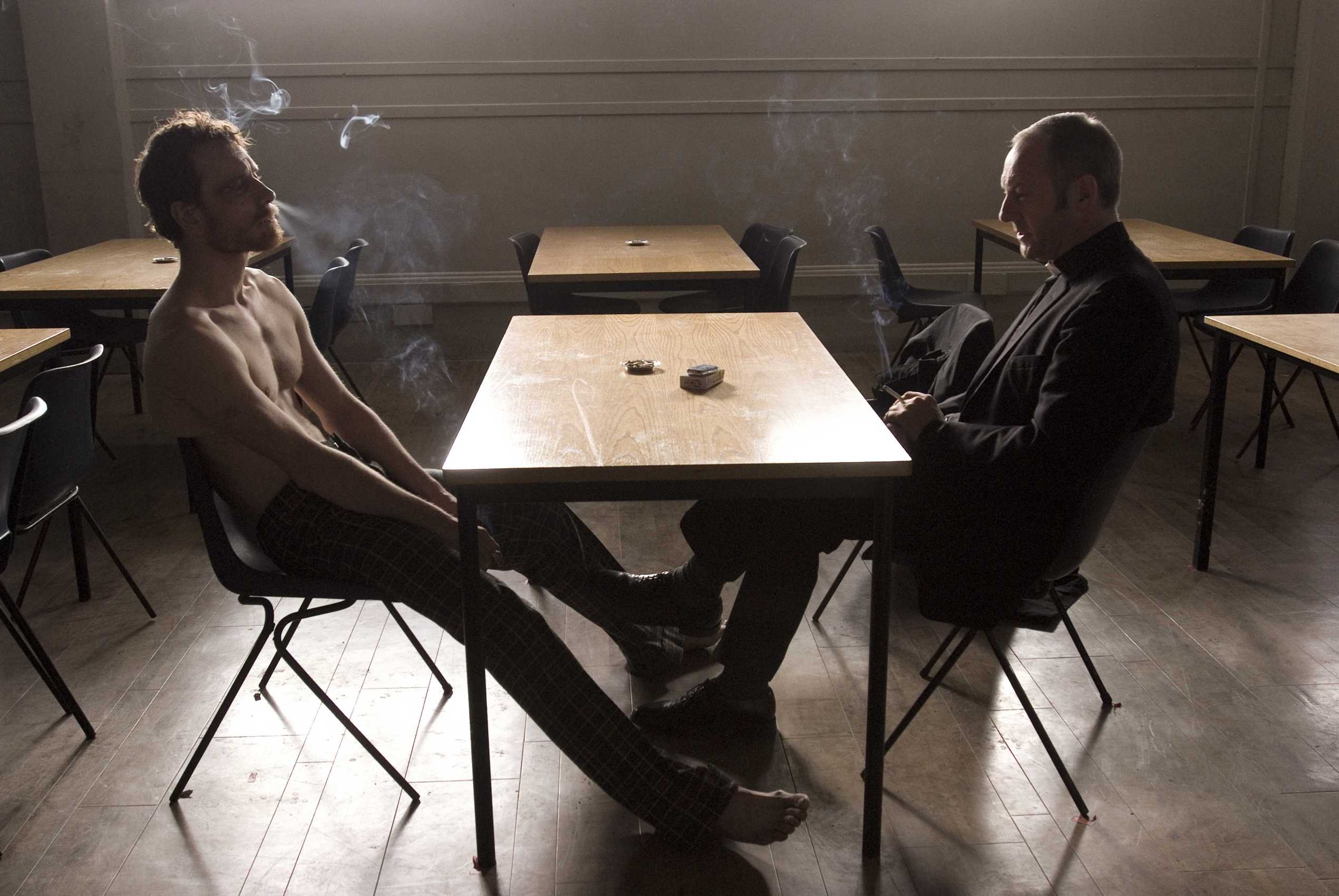
When directors use one shots, they often like to show off a flashy set piece, convey massive amount of information and exposition on a visual level or just immerse the viewer within the world they are trying to create. But when Steve McQueen employed an astonishing 18 minute one take in his directorial debut, Hunger, it was just to capture a simple conversation.
The film stars Michael Fassbender as Bobby Sands, the Provisional Irish Republican Army volunteer and MP who led the second IRA hunger strike and participated in the no wash protest in which Irish republican prisoners tried to regain political status after it had been revoked by the British government in 1976. It dramatises events in the Maze Prison in the period leading up to the hunger strike and its aftermath.
At one point, Sands is visited by Father Dominic Moran and discusses the morality of a hunger strike. It’s amazing to watch two actors fully in control of the scene, and a director with such confidence in their ability that he is willing to simply let their words and actions dominate the scene, allowing the conversation to be both flowing and riveting without the use of editing or camera movement beside a subtle zoom. It’s a masterclass and stands as a testament to the writing of the scene and especially the actors who perform it.